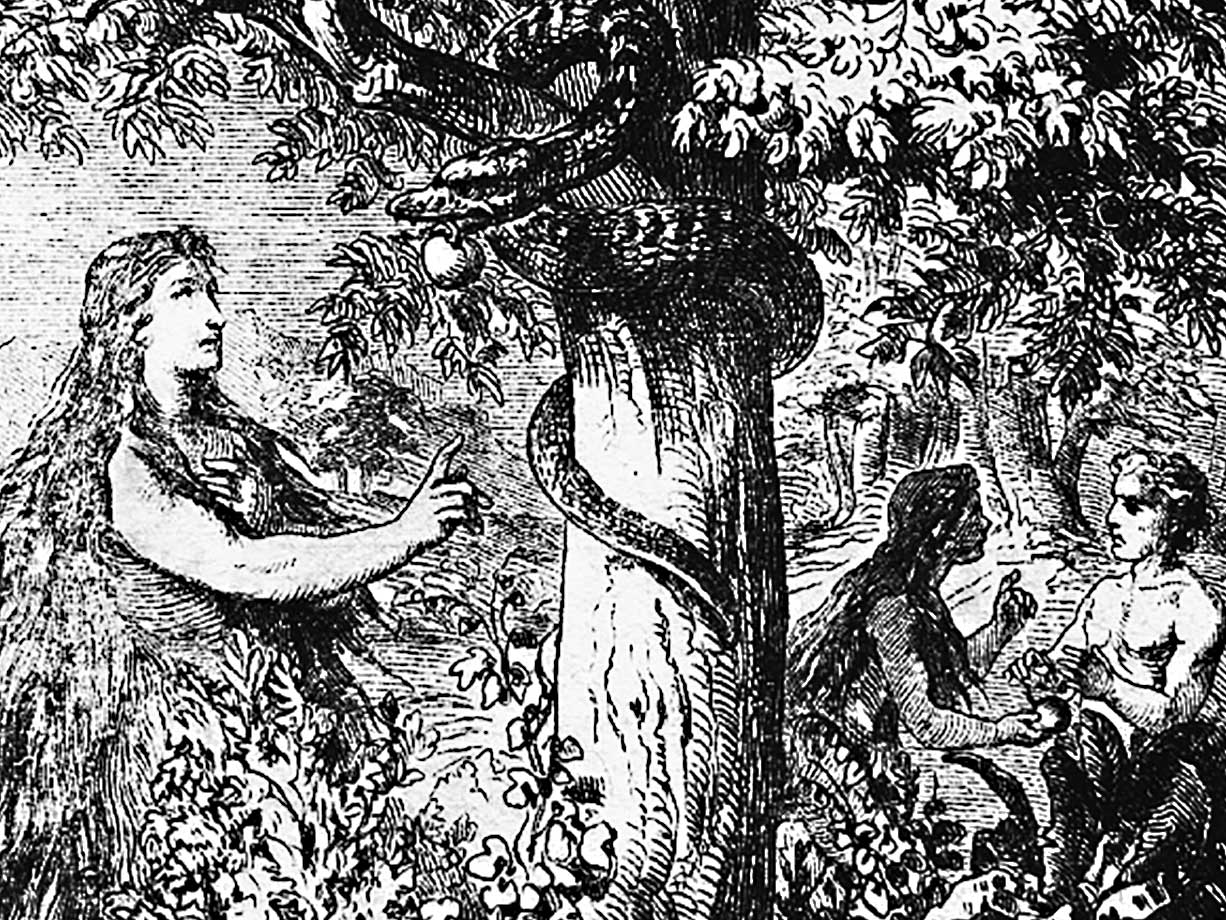Feature
What Women Need
Three Bad Ideas for Women & What to Do About Them
by Frederica Mathewes-Green
Few book titles have had the sticking power of Richard Weaver’s Ideas Have Consequences. Even people who have never read it find the blunt title instantly compelling. Weaver’s thesis was that the ideas that we absorb about the world, about the way things are or should be, inevitably direct our actions. Though the book was published in 1948, before many current bizarre ideas had fully emerged, the thesis is an eternal one. It sets people to wondering which ideas were the seeds that sprouted our present mess and which new ideas might be helping us out of it—or further in.
Ideas about the nature of life combine in a framework that can go by many names; the word paradigm, popular a decade ago, has through overuse become almost as irritating as chad. Some call this framework a worldview, mindset, outlook, ideology, cognitive framework, or reality grid; a New Testament term is phronema. Whichever term you choose, it means that mental assumptions link together and result in actions—ideas have consequences.
A few decades ago some people got a bad idea. Or perhaps the bad idea got them, and shook and confused them till the right ideas came to look strange. We might trace it to the Supreme Court’s Roe v. Wade decision in January 1973, but even that document grew out of prior ideas. It didn’t stand alone, and it cannot be combated alone. I’d like to explore three interlocking, mutually supporting bad ideas that sprouted during that era, and then look at some ideas about how to fix things.
The Feminist Bloom
It’s hard to pin down exactly when these bad ideas sprouted, but I can point to the moment when I first encountered them in bloom. At the time, I thought they were inspiring. I thought I had discovered liberation.
It was September 1970 and I was standing at the public information desk in the Student Union at the University of South Carolina. I was a brand-new freshman, pretty shy, and had been given the advice that I could meet people by joining organizations. So I joined the college paper, and was immediately given an assignment: “Find out what all this stuff is about women’s lib.”
I was baffled as to how to do that. Feminism had just begun impinging on public consciousness, usually in the form of a joke. It was called “women’s lib,” and wasn’t taken seriously, carrying no more weight than an offhand comment on Johnny Carson about “bra burners.” I didn’t know how to research the topic, but the editor had a suggestion: Go to the Student Union and page “anyone who knows about the women’s liberation movement.”
I can’t imagine what would happen if I went to that same desk and had them make the same announcement today. But 30 years ago I had a short wait, then saw two women coming toward me wearing the fortified expressions of pioneers. Kathy and Rosa steered me into the student lounge, where we sat for a long afternoon while they opened to me the hidden knowledge of women’s oppression through the ages. As they expounded this mystic wisdom, I made notes, and nodded. I liked what I was hearing.
I use the language of religious conversion intentionally; just as conversion to Christ confers an entirely new way of looking at life—the phronema of the Spirit—feminism offered me a new worldview in a form that was similar to a religion. I had rejected my childhood Christian faith, but feminism offered membership in a parallel enlightened community, one that had sacred writings and advanced leaders able to instruct neophytes in the vision. Initiates met in ritual gatherings—consciousness-raising groups—where we spoke in a vocabulary unique to insiders. We had distinctive clothing and grooming styles, analogous to religious habit and tonsure.
When my first campus byline appeared a week later, it was over a story that cautiously endorsed the “libbers.” I continued my catechesis under Kathy and Rosa, and eventually became a leader and teacher myself, a member of the inner circle and a guru of campus feminism.
A Feminism Revised
This proto-feminism wasn’t identical to the feminism of today; the early version was full of energy but unclear on direction, and shooting off in multiple directions at every imaginable target. Not all the ideas prevalent then continued to be part of the movement. Of the ideas that lasted, not all were successful. Of the ideas that were successful, not all were bad.
For example, one idea that died quickly was that women should live in community and pool their children in a cooperative care-taking scheme. This didn’t happen because once we started having kids, we discovered that we didn’t really like how other people wanted to raise them. We wanted our own separate homes and personal control over child-rearing decisions. Doing it by community vote turned out to be unworkable.
An idea that had tenacity, but didn’t succeed, had to do with images of women in advertising. One of my personal crusades in those early feminist days was to oppose the exploitation of women in advertising. I protested that women’s bodies were being displayed in ways wholly irrelevant to the products being advertised; they were used simply as sex objects. Those who think feminists won victory in every cause should turn on the TV or open a magazine and judge what progress this cause has made. This is one battle that mainstream feminism finally abandoned as unwinnable. You can fight City Hall; you can’t fight Madison Avenue.
A happier idea was that women should return to more natural standards of physical appearance. You may have forgotten how bizarrely artificial the ideal of female beauty had become in the sixties. Perhaps it had to do with the space race or the fad of modernity, but everywhere women started looking like Jane Fonda in Barbarella.
Rent a film from the sixties or early seventies and notice how armored the women’s bodies look, how rigid and exaggerated their hourglass figures, how vast and immobile their hair, how surreal their makeup. Remember bright green eye-shadow swabbed up to the eyebrows, and shiny white lipstick? Real women don’t look like that; even these women themselves didn’t look like that stepping out of the shower. Starlets had to be assembled every day by a squadron of assistants, like a portable tank.
These wallpapered Amazons contrasted with more natural beauties of earlier decades, like Katherine Hepburn or Bette Davis. Likewise, compare a fully armored Ursula Andress of 1965 with Julia Roberts or Sandra Bullock today, and you’ll see a real victory for women. Only a few women burned bras, but all of us threw away our girdles, and as a result the world is a friendlier place. The idea that women’s natural bodies are beautiful enough was a good idea, and the consequences have been good as well.
Abortion & Unbearable Children
But some ideas were bad, and the greatest producer of grief, of course, was abortion. I lose track of how many millions have died; when it passes 40 million, the mind begins to swim. We can cope with such figures only by ignoring them. Once I heard someone observe that a memorial similar to the Vietnam Veterans Memorial, listing the names of all these babies, would have to stretch for 50 miles. That was many years ago, and it would be many miles longer today. But such a wall cannot exist, because those babies never had a name.
We think of abortion as the defining, litmus-test issue of feminism, but it was not always a significant part of the package. When the feminist bible, Sisterhood Is Powerful, was published in 1970, only one portion of one essay focused on abortion. In 1967, when the National Organization for Women met for the first time, abortion and contraception were mentioned only briefly at the end of its “Bill of Rights”; abortion appears only as the last word in the document.
Among an array of bubbling ideas, abortion rose to the top, I believe, mostly because it was concrete. How could you measure whether something as foggy as “respect for women” was improving? It was impossibly vague. But repealing a law, or passing a new one, was a tangible goal. You could make a plan to achieve it, then implement and correct the plan, and have something to assess at the end of the day. Legalizing abortion was practical, and as a result it became important. Much the same thing happened in nineteenth-century feminism, as voting rights for women overshadowed all the more indefinite goals. Once the vote was won, in 1920, feminism went into suspended animation for 50 years. It was revived only by the appearance of another practical goal.
There are two other bad ideas from seventies feminism, which combine to create a current situation that makes abortion seem indispensable. Think about it this way: Abortion is the solution, so to speak, of the problem of pregnancy. But when, and why, did pregnancy become a problem? Throughout most of human history, pregnancy has been a blessing. New children were welcomed because they built the strength of a family and became the support of a couple’s old age. New children meant new life; they meant both personal delight and growth of the tribe.
But for some reason in the late twentieth century, pregnancy came to seem an unbearable burden. It became so unbearable that a fourth of the time it occurred women sought abortion to escape it.
The Seduction of Careerism
Was this because pregnancy had become dangerous to women’s health? Was the nation wracked by war or famine? No, America during this period was the wealthiest, healthiest, most secure and comfortable nation in history. The reason pregnancy became unbearable is due to a twofold change in expectations about women’s behavior—two bad ideas. One was the idea that women should place career above child-rearing. The other was that women should be promiscuous.
Both ideas were promoted by the feminist movement, yet there is a profound irony: Both ideas are stubbornly contrary to the average woman’s deepest inclinations. Both ideas, in fact, were adopted unchanged from the worldview of the folks feminists claimed to hate—male chauvinists.
There is a pop-sociology concept called “imitating the oppressor,” which means that when a group emerges to a new identity it tends first to adopt the values of whomever it perceives to be holding power. In this case, it means that feminists presumed that if men wanted something, it must be valuable, so it must be what women want, too. If men wanted to sleep around, women must want the same thing. If men thought the workplace was more important than the home, women must think the same. Whatever “the oppressor” valued was assumed to be intrinsically valuable, and feminists fought for their share.
Take the bad idea that I’m calling “careerism.” I don’t mean by this that women shouldn’t have careers. By “careerism” I mean a half-conscious ideology that holds that the most important thing in life is the prestige conferred by one’s employment, and it’s as bad for men as it is for women.
This is a foolish notion on many levels, not least because only the most fortunate and elite people get to have careers. Most people just have jobs. When I was a young feminist mouthing off about how I was going to be out in the workplace and not stuck at home, my dad gave me a few wise words that, improbably, sunk in even then. He pointed out that most of the people in the world don’t get their fulfillment from the thing that gives them a paycheck. They get their fulfillment from other facets of life: faith, family, hobbies, literature, music. For most people, a job represents only the hours they must spend each week to earn the free hours in which they can do the things they really care about. Careerism is the misguided notion that work trumps everything else.
In another odd twist of history, in the late fifties and early sixties there was a groundswell of concern that careerism was a poison, and too much obsession with the corporate ladder was deadening to the soul. Brows were knit over “the rat race” and “conformity,” “the man in the gray flannel suit” and “lives of quiet desperation.” Early hippies climbed onto this anxiety and jumped off, recommending that everyone “drop out,” get back to the land, make pottery and eat acorns. The early feminism I knew meshed with that, but within a few years the movement was banging on the glass ceiling demanding to be let in.
In the process, feminists concluded that men were right about everything. If men thought that housewives were dumb, that staying home and raising kids was mindless drudgery, it was so. It didn’t matter that our foremothers for generations had found homemaking noble and fulfilling. What did they know?—they were stupid housewives! We were embarrassed by our female ancestors and envied the males. They had power, and we wanted power. We couldn’t imagine any success except success in men’s terms.
Thus, feminism unconsciously adopted the very values of the people they claimed to be opposing, because it’s so easy to get confused about what you really want. We ignored the evidence of our own eyes. We saw men losing their identities in their careers, exhausted from the “rat race,” nourishing ulcers at three-martini lunches, and dying early of heart attacks, yet we clawed to gain the same privilege. Even the memory of the absence of our own daddies from our childhood didn’t open our eyes. It was the sour grapes principle in reverse: The grapes may look sour, but as long as men wanted them, we’d choke them down.
Playgirls & Biology
Another bad idea was rising at the same time, the idea that it would be fun if everybody had as much sex as possible with as many people as they could. Through the last few decades women have continued to try to convince themselves that this is fun; it’s reputed to be fun, it looks like fun on TV, everyone else thinks it’s fun, right?
This notion, of course, has been a favorite with men for quite awhile—the last few million years, perhaps. But its formal expression goes back to Playboy magazine, when the thesis was dignified with the audacious label “the Playboy philosophy.” (Picture the busts in a dusty old library: Socrates, Plato, Aristotle, Hefner.) In the early seventies Playboy was a clearly identified enemy of feminism, due to its “exploitative images.” That changed; Playboy is now an ally of feminism because Playboy is such an enthusiastic defender of abortion. I’ll leave you to put two and two together on that.
There isn’t a venerable history of women celebrating promiscuity; if anything, women’s wisdom over the ages taught that emotional security was the precondition for sex being fun, and a wedding ring was the best aphrodisiac. But again, what did stupid old housewives know? Men called them prudish, so that’s what they were. Thirty years later women are still going morosely out into the night in dutiful pursuit of fun. And if it’s not fun, she presumes, it must be because something is wrong with her.
How did pregnancy become unbearable? These two bad ideas come together like two jaws of a vise. Compare the woman operating under these ideas with a woman of her great-grandmother’s era, a time when chaste marriage was upheld and mothering was valued. If the modern woman is dutifully promiscuous, a high proportion of her sexual experiences are going to be in a context where the male partner feels no responsibility for a resulting child. Indeed, a pregnancy is likely to seem to him a failure on her part, if not an injustice. Contraception has fostered the ignorant expectation that sex has nothing to do with reproduction, but sometimes raw biology still wins out. This woman may have far fewer pregnancies than great-granny, but any one of them is more likely to seem disastrous.
Likewise, if she has adopted the idea that professional work is more important than child-rearing, pregnancy can seem a disaster to her life plans. The trick of juggling motherhood and career is so difficult that it’s still material for magazine cover stories. Thirty years later we’re no closer to solving the problem, and I doubt that 30 years more will help. For her great-grandmother, however, it’s likely that one more baby would not create a significant burden in a life already accommodating of home and children.
Abortion as Solution
Thus these two bad ideas come together, pressing in like the jaws of a vise, and making a woman feel she has no escape but abortion. Feminism sought (1) increased access to public life, and (2) increased sexual freedom. But that participation in public life is significantly complicated by responsibility for children, and uncommitted sexual activity is the most effective means of producing unwanted pregnancies. This dilemma—simultaneous pursuit of behaviors that cause children and that are hampered by children—inevitably finds its resolution on an abortion table.
Feminists defend abortion with desperate passion because the whole shaky structure of their lives depends upon it. Indeed, Justice Blackmun in the Webster decision wrote that women had “ordered their lives around” abortion, and the Casey decision was based on the assumption that abortion had become a necessary part of the social machine. There’s a sad accuracy in that. When something like abortion becomes available, surrounding expectations regarding reproduction and childcare subtly shift to accommodate it, and eventually it appears to be indispensable.
This is why the fight against legal abortion cannot stand alone. If we could padlock all the abortion clinics tomorrow, we’d see the next morning a line 3,200 women long pounding on the doors. We wouldn’t have solved the problems that make their pregnancies seem unbearable. We wouldn’t have changed the context that normalizes promiscuity and undermines their power to say no. We wouldn’t have restored respect for the profession of mothering, or respect for fathering for that matter, so that men would be proud to love the moms and support the children whose lives they begin.
These three interlocking bad ideas—abortion, careerism, and promiscuity—present a complicated picture, and initially a depressing one. If you’ve ever played the game of pick-up sticks, you know how impossible the task looks at the beginning, when you must gradually and carefully dislodge the first sticks one at a time without collapsing the pile.
Three Good Ideas
Yet pregnancy care centers across the country have been working on these problems for many years now, ever since the first Birthright center was founded in 1965. There are estimated to be 3,000 pregnancy care centers across the nation, in comparison with only a few hundred abortion clinics. Over the years these centers have shifted and enlarged their focus, so the early years’ emphasis on the baby grew to encompass the pregnant woman as well, and then both the woman who had already experienced abortion and young people who can be encouraged to make better choices.
These, then, are three good ideas, and these ideas also have consequences. The first is to support the pregnant woman. Pregnancy care centers offer pregnancy tests, maternity clothes, medical referrals, practical advice, spiritual counsel, and many other kinds of aid; recently, many centers have become freestanding medical clinics and provide full prenatal care.
Yet the most important thing pregnancy centers provide will always remain the individual friendship and support that a pregnant woman needs. When I began research for my book, Real Choices: Listening to Women, Looking for Alternatives to Abortion, I had the goal of discovering the main reasons women had abortions. I thought that if we could rank-order the problems women faced—material, practical, and financial—we’d be able to address them more effectively.
To my great surprise, I found that these practical forms of support were only secondarily important. Woman after woman told me that the reason she’d had an abortion was that someone she cared about told her she should. The people she needed to lean on for support in a crisis pregnancy, like her boyfriend or mother, didn’t supply that support, but instead encouraged her—and sometimes, sadly, coerced her—to have an abortion instead.
While pro-choice advocates present abortion as an act of autonomy, pregnant women experience it rather as a response to abandonment. Pregnancy is the icon of human connectedness, binding a woman to her child and the father of the child. Abortion shatters those connections and leaves her desolate.
Thus, when I asked women, “What would you have needed in order to finish the pregnancy?” repeatedly they told me, “I needed just one person to stand by me.” While there are many useful ways centers can support pregnant women, the most important thing they can give is friendship, simple moral support. Across the nation pro-lifers are doing many important things to protect unborn life: making TV commercials, proposing bills in Congress, writing books. But the one thing that can prevent an abortion tomorrow is what women told me they needed: a friend. Individual, personal care for pregnant women is a very, very good idea.
Support & Prevention
A second good idea is that of offering grief-counseling for post-abortion women. You might think that once a woman has had an abortion, it is too late for a pregnancy center to be of any help. The opposite is true. Nearly half of the abortions done each year are done on women who have already had an abortion. In a single year in California, almost 1,700 women had two or three abortions.
Psychologists say the mechanism works like this: A woman has an abortion, but in her heart grieves for her baby, and unconsciously feels obligated to have another to “make up for” the one that was lost. This is called an “atonement baby.” But when she “slips up” and becomes pregnant again, she finds she’s still in the same bad situation. Circumstances are no more welcoming to a new life than they were before. She has a second abortion, and then has two atonement pregnancies to make up. It is vital that trained counselors help women work through their grief and come to a healthy resolution, so this cycle can come to an end.
A third good idea is preventative: to reach young people before they have become sexually active and give the resources and incentive to remain chaste. The best programs address young men as well as young women, and go beyond “just say no” to present the positive aspects of marriage. Some secular programs target girls alone, and counsel abstinence only till high-school graduation, and drill girls to be suspicious of boys and believe they can’t be trusted. This, I think, is exactly the wrong approach. If we want strong marriages and healthy two-parent families, we need to reach young men and inspire them with a vision of the nobility of fatherhood. We need to enable boys and girls to behave in admirable ways, deserving of trust, rather than plant further suspicion between the sexes.
The best character education programs build boys into young men who will see in marriage the opportunity to take on a noble, time-honored role. In our culture men are almost continually insulted, and conservatives and pro-lifers are not immune to this infection. Pregnancy care workers can find it easier to send a woman to the welfare office than to explore whether the father of the child might be called on instead. We expect these men to be “bums,” and they live down to our expectations.
Pro-Life Hope
Pro-lifers easily speak of God creating new life, ordaining that the woman and unborn child be knit together, and they should recognize that God has appointed a third person in that situation as well. I wince when I hear pro-lifers use euphemisms like “she found herself pregnant”; it sounds Victorian, like “piano limbs.” It’s as if the woman just discovered the baby in a parking lot. No, she had help with that project. For every “unwanted” pregnancy there is a dad who needs to be challenged to do the right thing, for his own sake as much as his new family’s.
Restoring young men to the role of husband and provider is the most important long-term strategy for reducing the need for abortion. If he is there, problems look much less dire. If he is there, she can do it. If she is alone, the struggle is much more steep.
Three bad ideas have intertwined their roots and created an array of bad consequences, with the loss of tens of millions of unborn children only the most bloody result. Destruction of trust between men and women, decline of marriage, rise of sexually transmitted diseases, and other ill effects will remain uncounted until the passage of centuries gives some historian perspective to comprehend the full sweep.
From that perspective, I hope, he will also see the counter-forces of health at the moment of their emergence. These forces are there because, like the human body, a human community has an impulse to health.
There are already encouraging signs that younger people, in their teens and twenties, are more pro-life and more pro-chastity than older folks. Membership rolls in pro-choice organizations are graying, while those of pro-life groups are growing younger. At this moment we can see only the beginnings of hope, and not how it will all come about. But someday we will have that eternal perspective, and be able to see how our few and feeble efforts might have prevented some evil from advancing, or even turned it back a few feet. May God give us courage; may he give us encouragement; and may we be brave enough to respond. •
Frederica Mathewes-Green is a columnist for Beliefnet.com and a contributor to the Christian Millennial History Project multi-volume series. Her books include At the Corner of East and Now (Putnam), The Illumined Heart (Paraclete Press), and The Open Door: Entering the Sanctuary of Icons and Prayer (Paraclete Press). She lives in Linthicum, Maryland, with her husband Fr. Gregory, pastor of Holy Cross Orthodox Church. They have three children and three grandchildren.
subscription options
Order
Print/Online Subscription

Get six issues (one year) of Touchstone PLUS full online access including pdf downloads for only $39.95. That's only $3.34 per month!
Order
Online Only
Subscription

Get a one-year full-access subscription to the Touchstone online archives for only $19.95. That's only $1.66 per month!
bulk subscriptions
Order Touchstone subscriptions in bulk and save $10 per sub! Each subscription includes 6 issues of Touchstone plus full online access to touchstonemag.com—including archives, videos, and pdf downloads of recent issues for only $29.95 each! Great for churches or study groups.
Transactions will be processed on a secure server.
more on feminism from the online archives
more from the online archives
calling all readers
Please Donate
"There are magazines worth reading but few worth saving . . . Touchstone is just such a magazine."
—Alice von Hildebrand
"Here we do not concede one square millimeter of territory to falsehood, folly, contemporary sentimentality, or fashion. We speak the truth, and let God be our judge. . . . Touchstone is the one committedly Christian conservative journal."
—Anthony Esolen, Touchstone senior editor












